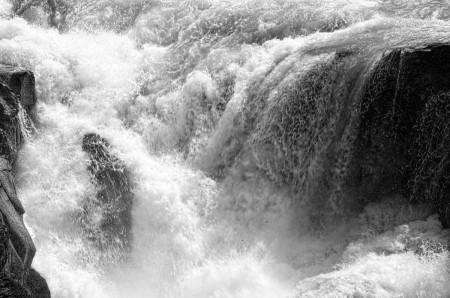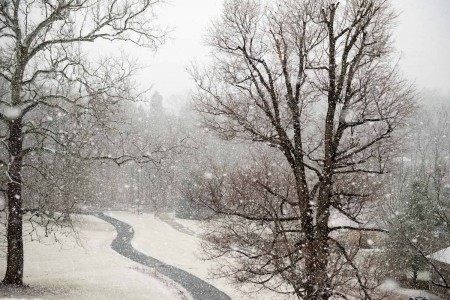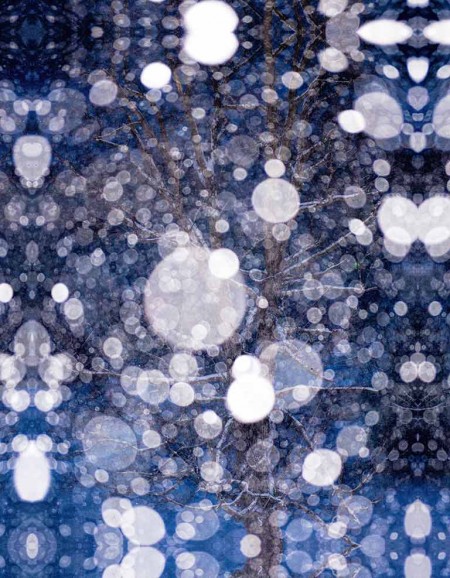There is no black-and-white answer to this question. No a color answer, either. But perhaps this is a good starting point:
A photograph always depicts a subject. Most photography begins and stops with the idea of a “capture”: the goal is to achieve a literal representation of the subject. It doesn’t even have to be a subject the photographer actually saw, as countless tree cams will attest.
Such photographs can be beautiful, artistically composed, lovingly exposed, carefully cropped, meticulously printed. But they remain captures, and however artistic, they are not fine art.
Being representational isn’t the problem. But being ONLY representational keeps such photos on the “photo” side of a very large swamp. Fine art photos live on the other side of the swamp.
Such photos do two things: they do have some visual tie to the original subject, and they express some truth about the subject that goes beyond plain representation. That is, fine art photos do remain linked to the underlying subject, but they have added dimensions of feeling, interpretation, and impact that the purely “captures” usually lack. Bluntly, fine art photos transcend their subject.
Purely digital constructs and images that have no recognizable tie to the subject may be art, but they are not fine art photography.
The area between “captures” and “fine art photos” is indeed swampy. That’s because in a world of digital photography (and before that, of manipulative darkroom techniques) there are virtually NO photographs that are not manipulated. Even shooting jpeg files in automatic or program mode, the camera is making decisions about how to interpret the RAW data that is the actual capture. The camera captures light and records it as 1s and 0s. Even the most basic camera is deciding white balance, where the midpoint of the exposure lies, and how to represent highlights and shadows. The camera makes decisions based on rules and look-up tables. Humans interpret what we see, and that makes all the difference.
For more advanced photographers who use RAW interpreters like Adobe Camera Raw, CaptureOne, or PhotoNinja, manual image manipulation is routine: Automated RAW interpreters don’t do a good job with contrast, color saturation, and sharpness, to name just three elements photographers like to adjust for themselves.
So, since all digital images are manipulated by the camera or by the artist, it’s not the act of manipulation that turns an image from a photo into a fine art photo. It’s not even the amount or degree of manipulation that does the trick. Some fine art photos have minimal manipulation; others have huge amounts. The photograph, whether printed or viewed on screen, is much more than that. No, what makes a capture into a fine art photo are the vision, intention, and technique of the photographic artist. Such images express ideas, concepts, feelings, reactions, interpretations, responses, experiences, and a world view that the photographer brought to the original photographic session or saw as potentially present in later examination of the image.
That’s a long sentence. A shorter version might be, “the fine art photograph transcends the subject because of the unique vision and technique of the photographer.”
Finally, the truly great fine art photograph expands the experience, vision, and soul of the viewer. This happens when the image not only expresses the vision of the artist, but does it in a way that actually connects with the viewer.
So, to sum up: fine art photography starts with a subject and stays connected to it. But the image is enriched by the vision, knowledge, and techniques of the artist to take that subject into a new realm, somewhere out past capture and into a different space altogether. And it invites, even compels, the viewer to go along for the ride.
Minimally processed. More than a capture, but is it fine art?
Two very similar shots, taken at different times of day. One is a straightforward capture. The other is fine art (or has been recognized as such in an art competition). The “capture” shot has minimal processing. The “fine art” image used a flash to intensify the foreground snow flakes and a color balance adjustment heightened the natural blue cast (it was dusk). One shot records an event, the other creates an experience and a mystery.
–Eric K. Hatch, PhD, is a writer and photographer living in Loveland, OH. His portfolio site is http://hatchphotoartistry.com.


